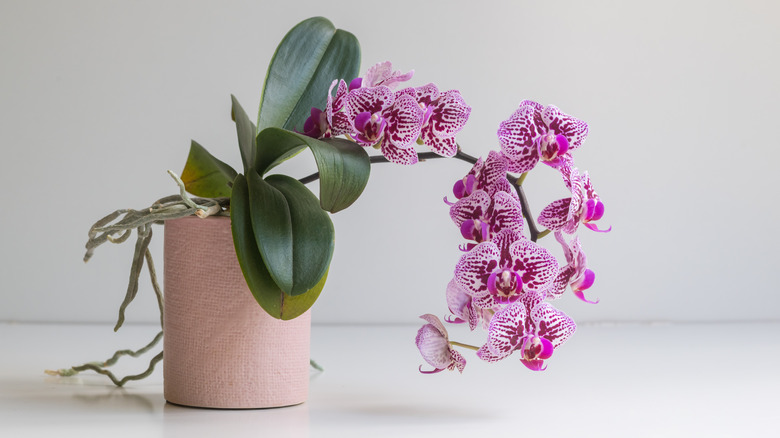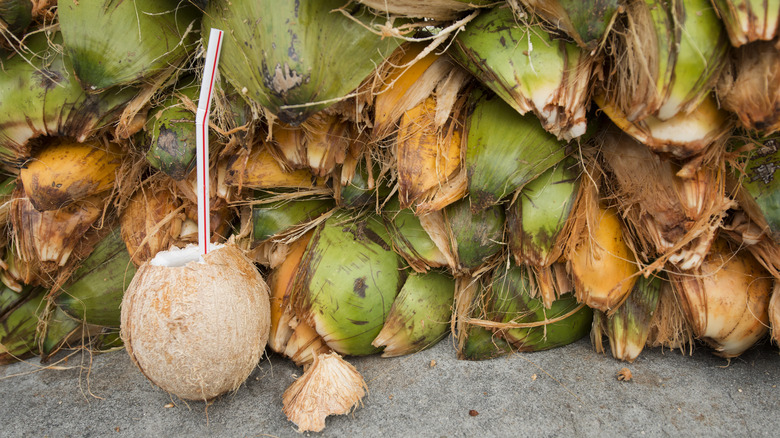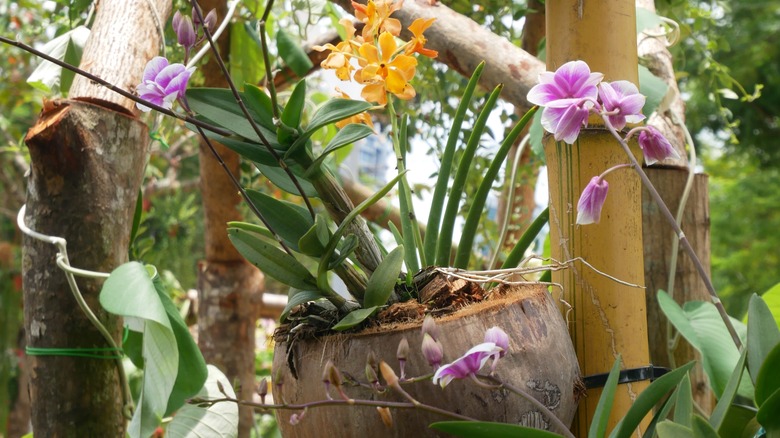The Coconut Hack That Can Save Your Perishing Orchid
In the realm of horticulture, orchids stand as prized plants, coveted for their breathtaking beauty and exotic allure. However, with the rewards of orchid ownership come challenges, and the sight of once-vibrant blooms drooping can be disheartening. It's a shared experience among orchid aficionados — the moment of concern when the plant's vitality appears to wane. This is precisely when despair may set in, and hopelessness can cloud the joy of orchid cultivation. Little do many know, a solution lies in an unexpected source: the unassuming coconut.
Many individuals embark on the journey of orchid cultivation, drawn to these intricate blooms for reasons as diverse as their stunning variety. Whether it's the desire to create an elegant garden display, an interest in nurturing unique and rare species, or simply a passion for the challenge of cultivating these delicate flowers, orchids hold a special place in the hearts of plant enthusiasts. So, it truly is heartbreaking to see our beloved orchids begin to droop or weaken. But take heart! All is not lost with the help of coconuts. The combination of a coconut shell and husk can not only rescue a drooping or dying orchid, but also ensure it remains healthy and vibrant, turning a potential loss into a triumph of sustainable horticultural expertise.
The coconut intervention
Beyond providing their refreshing and energizing 'water' and 'meat,' coconut trees have tremendous utility — from the roots to the fruits and leaves. In the case of orchids, it's the husk and shell we want. Rescuing a weakened orchid involves delicately removing it from its current pot, so as not to cause further stress to the already fragile plant. Gently shake off any dirt or debris, exposing the root system for inspection. Trim any discolored or rotting roots, as this is necessary to promote healthy growth. Now, transfer the orchid to a coconut shell generously filled with coconut husk (or husk chips). Alternatively, you can wrap some coconut husk around each root before putting the orchid in the shell and securing it with some copper wire.
You can now fasten the orchid — coconut shell container and all — to a tree trunk, or hang it from a tree branch or pole. This natural blend of coconut husk and shell acts as an ideal medium, facilitating the aeration and moisture retention that's crucial for orchid vitality.
The science behind this method is rooted in the coconut's unique properties. The fibrous husk provides a balanced microclimate, preventing the roots from becoming waterlogged (note that orchids barely need to be watered) while aiding in proper water drainage. Additionally, the coconut shell itself serves as an excellent container, offering stability and insulation to the delicate orchid roots. It's a harmonious synergy of nature's elements, working together to rejuvenate a once-drooping orchid.
Some orchid care wisdom
Maintaining the health of your orchid extends beyond the initial intervention. To guarantee its long-term well-being, adopt a proactive approach to care. Monitor and regulate watering, allowing the potting medium to dry between sessions to prevent root rot. When it comes to feeding, the American Orchid Society recommends implementing a well-balanced 20-20-20 orchid fertilizer regularly; but exercise caution to avoid overfeeding, as this can be detrimental. Adequate light is paramount for orchids, but shield them from direct sunlight to prevent leaf scorching.
For indoor orchid care, proper ventilation is equally crucial, as stagnant air can contribute to mold, fungal diseases, and other issues. Regularly inspect the roots for any signs of decay, and if necessary, repeat the coconut intervention to maintain optimal conditions.
Remember, orchids are resilient, but they demand a balanced ecosystem. With mindful care, your orchid will not only survive, but flourish, gracing your space with vibrant blooms as a testament to your green thumbs and the transformative power of eco-friendly coconut-driven horticulture.


